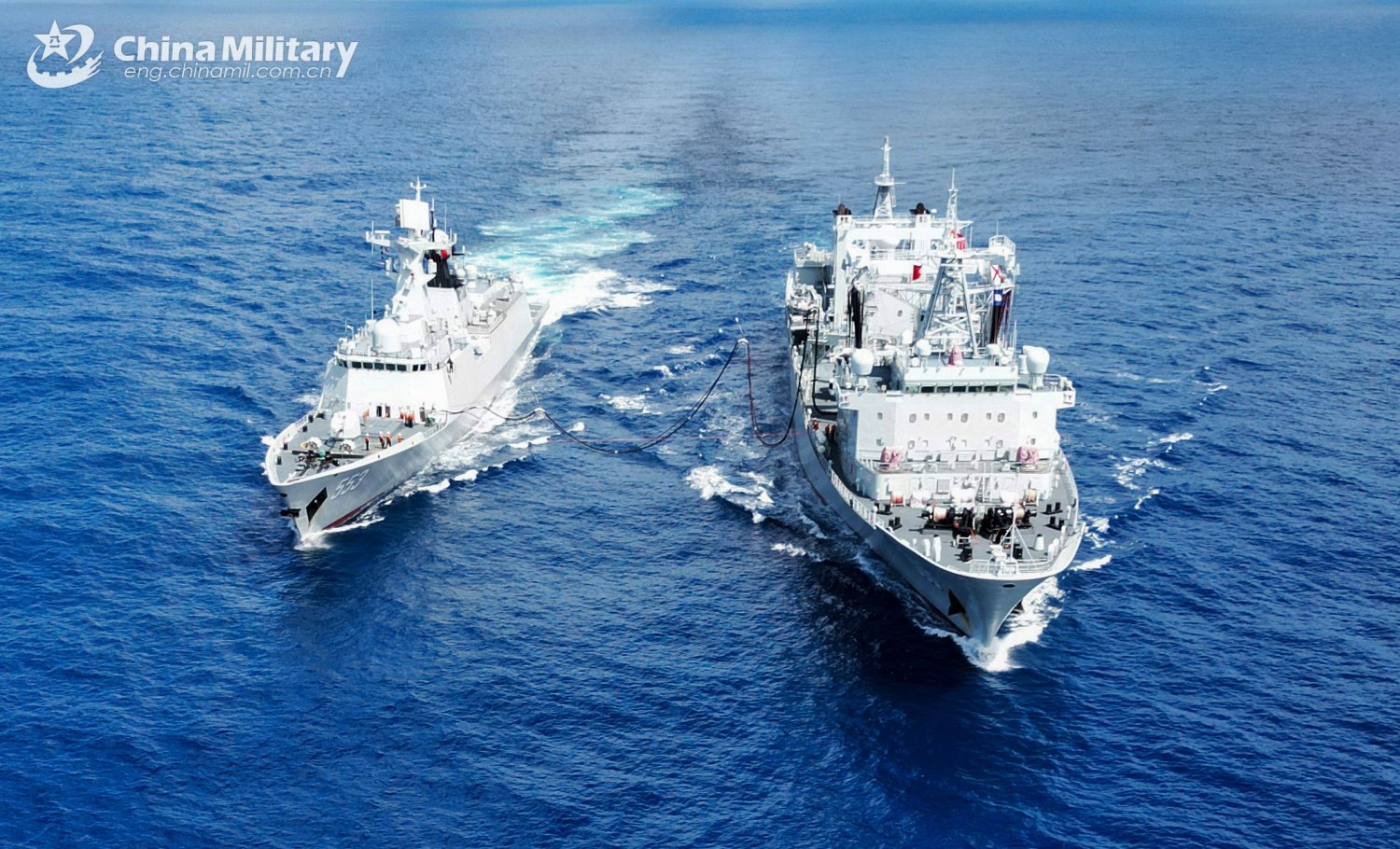
Congressional Report Warns: China’s Navy Expands Into a Global Blue-Water Fleet


According to the 2025 Report to Congress of the U.S.–China Economic and Security Review Commission, China continues expanding its military and economic footprint throughout the Indo-Pacific in ways that directly threaten the national security of the United States and its allies.
While much attention has focused on the South China Sea, Beijing is advancing a broader strategy to project power, gain leverage, and undermine Western influence across the region.
China’s People’s Liberation Army Navy (PLA-N) has become a true blue-water force, conducting regular operations in the Western Pacific, the East China Sea, the Philippine Sea, and deep into contested waters. The PLA is accelerating its preparations for a potential conflict with the United States and a rapid invasion of Taiwan. Its nuclear arsenal and delivery systems continue to expand, raising the threat to the U.S. homeland and forward-deployed American forces.
The PLA Navy fielded more than 370 ships in 2024, is expected to reach 395 ships in 2025, and could grow to 435 by 2030. Beijing also unveiled the Type 076 amphibious assault ship, designed to deploy drones, helicopters, troops, and fixed-wing aircraft.
Exercises around Taiwan increasingly simulate blockade operations and precision strikes. During the April 2025 Strait Thunder drills, Chinese forces rehearsed attacks on Taiwan’s energy and port facilities and operated as close as 24 nautical miles from the island’s coast.
In May 2025, the PLA Navy reached a new milestone when two aircraft carriers sailed simultaneously beyond the first island chain and into the second, part of a shift toward larger and longer deployments. China has also expanded operations across the Pacific Islands through naval diplomacy, intelligence-collection ships, satellite-tracking vessels, humanitarian missions, and preparations to deploy the Chinese Coast Guard. The region is central to China’s planning for a Taiwan contingency or any broader Indo-Pacific conflict.
In February 2025, the PLA Navy demonstrated far-seas power projection by conducting live-fire exercises in the Tasman Sea with an advanced Type 055 destroyer, a frigate, and a replenishment vessel, likely accompanied by a nuclear submarine. This was aimed at intimidating Australia and New Zealand and signaled Beijing’s willingness to challenge U.S. partners within their own sphere of influence.
Additional drills included joint PLA Navy and Air Force operations through the Miyako Strait during the October 2024 Joint Sword and April 2025 Strait Thunder exercises, which tested rapid power projection through critical chokepoints near Taiwan and Okinawa. The PLA Rocket Force also conducted intensive combat drills in February 2025 aimed at improving adaptability and interoperability under high-pressure conditions.
China’s push for regional hegemony in Southeast Asia is central to its strategy to weaken U.S. power in the Indo-Pacific. Beijing seeks full control of the South China Sea, secure access to key sea lanes, overland routes to the Indian Ocean that bypass the Malacca Strait, and a Southeast Asia that does not host U.S. forces or provide logistical support to the United States in wartime.
In order to support long-range naval operations, China is expanding access to dual-use ports and airfields, pursuing aggressive security cooperation, and integrating AI-assisted decision-making systems into the PLA while developing ways to counter the AI capabilities of rival militaries.
Beyond Asia, China has expanded its influence in Africa through joint exercises, military training sponsorships, arms transfers, and deployments of army and navy units. It has conducted major drills with Tanzania and Mozambique, carried out its largest air force deployment to date in joint exercises with Egypt, and trains thousands of African soldiers through professional military education programs. As Africa’s largest arms supplier, China is building long-term political and military alignment across the continent.
China is also increasing its control over strategic ports in Latin America, with thirty-seven port projects that could allow Beijing to monitor U.S. naval activity, disrupt trade, or support PLA deployments. Peru’s Chancay Port, built with over a billion dollars in Chinese investment, is a prime example. U.S. officials warn it could function as a dual-use facility capable of hosting PLA warships.
China’s naval expansion is tightly linked to its Belt and Road Initiative. Beijing faces a geographic vulnerability: its navy must pass through maritime chokepoints like the Malacca Strait, which adversaries could block. BRI port investments address this weakness by creating a “string of pearls” along critical sea lanes.
These include Gwadar Port in Pakistan, China’s military base in Djibouti, Hambantota Port in Sri Lanka, Piraeus Port in Greece, and the expansion of Cambodia’s Ream Naval Base. Designed as commercial facilities, their deep-water berths, reinforced piers, and fuel storage capacity match military requirements, giving China a network of ports that can support naval operations without the political cost of formal bases.
China is systematically developing the infrastructure, logistics, and forward positions needed to sustain a global blue-water navy, one capable of advancing Beijing’s interests far beyond its immediate region.
If this trajectory continues, China will soon possess not only the capacity to challenge the United States in the Indo-Pacific but also the global reach to undermine American power anywhere it chooses.
The post Congressional Report Warns: China’s Navy Expands Into a Global Blue-Water Fleet appeared first on The Gateway Pundit.
